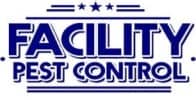Are you seeing more wasps flying around your property than normal? If they’re growing in numbers, that’s a good sign that there’s a wasp nest somewhere nearby. You’ll want to deal with it, as you don’t want wasps hanging around and potentially stinging anyone who comes near them. Here’s how to find the wasp nest, and what to do once you’ve found it.
Finding The Wasp Nest
If you’re seeing lots of wasps, that’s a very good sign the nest is somewhere on your property. You’ll want to be able to locate it, so you can start to have it dealt with. Before you start hunting it down, make sure you take the proper safety precautions. For example, wear tighter fitting clothing and tie long hair back, in order to avoid wasps getting caught in your clothing. Also, wash off any strong scents you may be wearing, as they can actually attract wasps.
Once you’re ready, you can hunt that nest down. The earlier it is in the year, the smaller that the nest will be. Queen wasps build the initial nest early in the season, and they lay the first batch of eggs. At this point, the nest can be as small as a golf ball. Once the eggs hatch they become workers, and the nest will expand rapidly. They can become as big as a basketball if left to develop for long enough.
The best way to find the nest is to follow the flight path of returning wasps. They can be out in your yard in sheltered places, such as under the porch. They can also be in your attic or a wall, so keep this in mind. As soon as you find it, don’t approach any closer to avoid the wasps seeing you as a threat and attacking you.

Identifying The Type Of Wasp Nest
There are several different types of wasp that can be making their home on your property. As such, you’ll want to be able to identify them. When you call for help, having that information will be useful to the pest control team. Here’s how you can identify the nests of different wasp varieties:
Paper Wasps
These are a very common breed of wasp, named after the type of nests they create. Their nests are made from chewed-up wood, which resembles paper when used for wasp nests. The nest itself will be built to be open and exposed, and look a little like an open umbrella. You may also find the wasps have built a new nest on top of the old one, to give the impression the nest is being reused.
Paper wasps can get rather large if you find them later in the season. They’re also fairly aggressive and are ready to attack if they think the nest is under attack.
Yellowjackets
These are other common wasp species that you may come across. Again, they’re fairly aggressive, which is why it’s important not to approach their nest if you see them. Yellowjacket stings get more common later in the year.
Their nests again look like paper, thanks to the wood material they’re built from. They’re typically found within walls or in cavities in the ground, as they offer greater protection to the wasps. A yellow jacket nest can contain thousands of wasps, so you’ll want to stay clear of it.
Bald-faced Hornets
The bald-faced hornets’ nest will look much like other wasps nests, as it’s made from chewed-up wood and so will have that papery outer layer. These wasp nests are usually found in natural cavities, so look for them in tree stumps, holes in trees, and so on. They can also be found in cavities in buildings though, so look out for these too.
Mud Daubers
These wasps are somewhat different. As the name implies, they create their nests out of mud, rather than wood. They are typically made in tubular formations and can be found in cracks that are in masonry, stone, or timber.
What To Do Next
Now you’ve located your wasp nest, what do you do next? The very first thing you should do is take safety measures, if at all possible. For example, if the nest is outside, or on the exterior of your home, close the windows and doors so they can’t get inside.
What you mustn’t do is approach the nest and interact with it. If you do so, you’re going to be a threat to that nest and so the wasps will attack. At the very least, it’s going to be painful for you. Remember, depending on the nest, the type of wasp, and the time of year you find it, there could be thousands of wasps in there.
You also need to remember that wasps will not die after stinging you as bees do. That lets them sting you repeatedly if they choose to.
Also, you may be allergic to the venom in the sting and not know it. Wasp sting allergies can be life-threatening, so you don’t want to take that risk. Even if you’re not allergic, multiple stings can be very harmful to your health.
As such, you’ll want to call a Facility Pest Control to handle the wasp nest for you. They have protective equipment they wear when they inspect the nest, so they will be safe as they do so.
You’ll typically find that they won’t remove the nest right away. Instead, they will eliminate the wasps inside first. Once that has been done, the nest can then safely be removed.
If you suspect there may be a wasp nest in your home, you can find them by following their return flight path. Once you’ve found them, make sure you stay away and call a pest control service to keep you safe. That way, the wasps are removed without anyone getting hurt.
